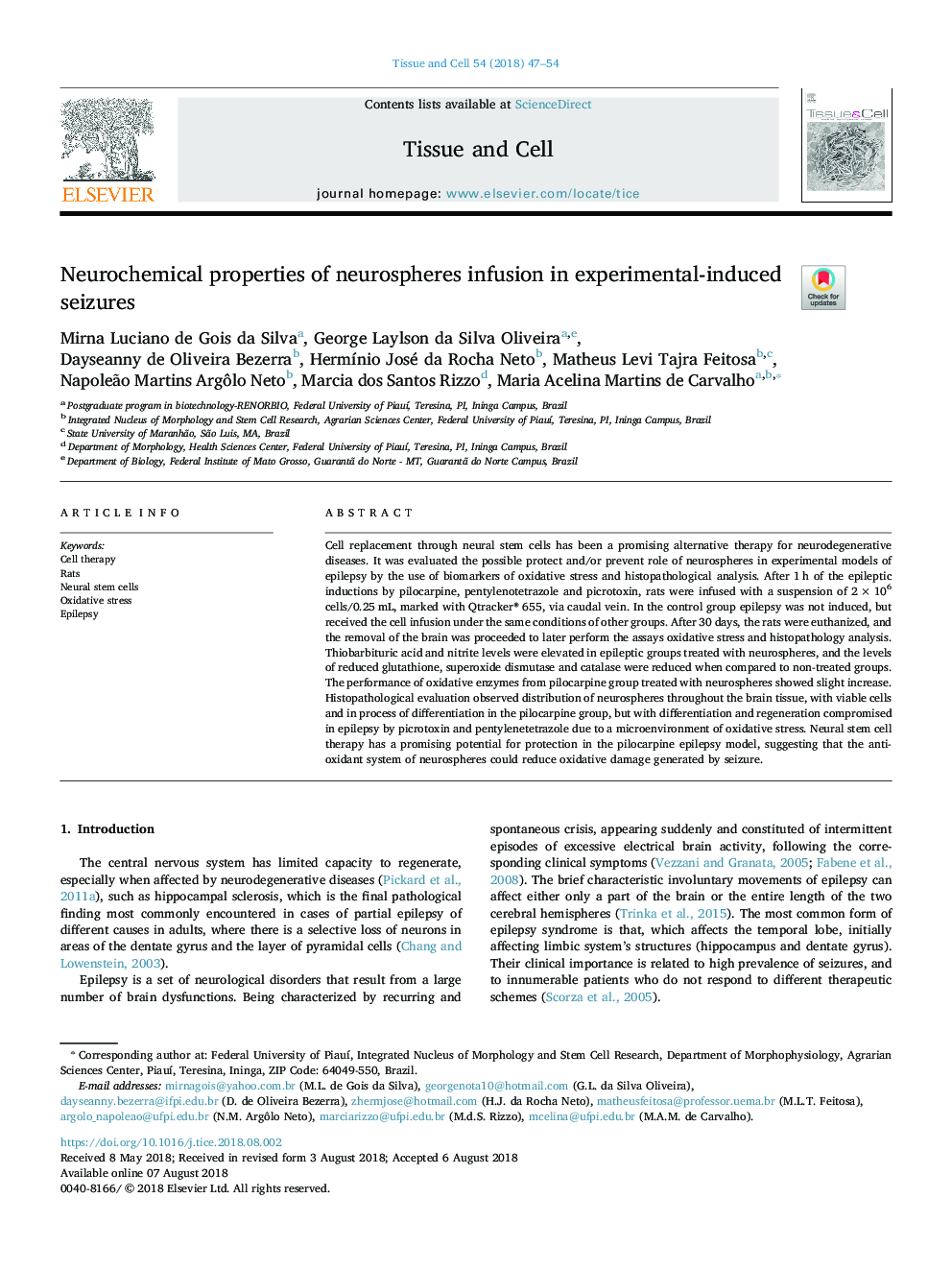| Article ID | Journal | Published Year | Pages | File Type |
|---|---|---|---|---|
| 8480853 | Tissue and Cell | 2018 | 8 Pages |
Abstract
Cell replacement through neural stem cells has been a promising alternative therapy for neurodegenerative diseases. It was evaluated the possible protect and/or prevent role of neurospheres in experimental models of epilepsy by the use of biomarkers of oxidative stress and histopathological analysis. After 1âh of the epileptic inductions by pilocarpine, pentylenotetrazole and picrotoxin, rats were infused with a suspension of 2âÃâ106 cells/0.25âmL, marked with Qtracker® 655, via caudal vein. In the control group epilepsy was not induced, but received the cell infusion under the same conditions of other groups. After 30 days, the rats were euthanized, and the removal of the brain was proceeded to later perform the assays oxidative stress and histopathology analysis. Thiobarbituric acid and nitrite levels were elevated in epileptic groups treated with neurospheres, and the levels of reduced glutathione, superoxide dismutase and catalase were reduced when compared to non-treated groups. The performance of oxidative enzymes from pilocarpine group treated with neurospheres showed slight increase. Histopathological evaluation observed distribution of neurospheres throughout the brain tissue, with viable cells and in process of differentiation in the pilocarpine group, but with differentiation and regeneration compromised in epilepsy by picrotoxin and pentylenetetrazole due to a microenvironment of oxidative stress. Neural stem cell therapy has a promising potential for protection in the pilocarpine epilepsy model, suggesting that the antioxidant system of neurospheres could reduce oxidative damage generated by seizure.
Related Topics
Life Sciences
Agricultural and Biological Sciences
Agricultural and Biological Sciences (General)
Authors
Mirna Luciano de Gois da Silva, George Laylson da Silva Oliveira, Dayseanny de Oliveira Bezerra, HermÃnio José da Rocha Neto, Matheus Levi Tajra Feitosa, Napoleão Martins Argôlo Neto, Marcia dos Santos Rizzo, Maria Acelina Martins de Carvalho,
